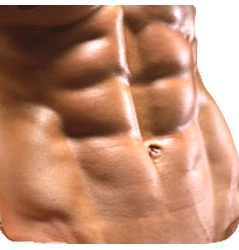Brian Schiff’s Blog
Injury Prevention, Sports Rehab & Performance Training Expert
Long lever abdominal exercises are popular. However, they also pose a risk for the lumbar spine given the relatively poor abdominal strength/control and lever arm created by momentum and the iliopsoas muscle. The stress on the lumbar spine is high as the leg (s) come back down due to reverse muscle action via the attachment of the iliopsoas on the lower lumbar spine. As a result, this can cause a sizable shear force on the spine.
I counsel patients and athletes with prior history of disc pathology to be very careful with any long lever or ballistic abdominal exercises with straight legs as the physics may present higher risk than reward and create excess strain on the spine. While a single workout may not cause harm, there can be a gradual repetitive overload that creates weakness or harm to the disc and/or spine. This exercise from my Functionally Fit column promotes strength and core or pillar stability through resisting excessive spinal extension.
Most adult males are in search of that ever elusive six pack, right? Well, most intelligent trainers and strength coaches are well aware that there is so much more than just crunches to making the core functional.

With that said, I believe abs may be one of the most over trained sets of muscles today. Some people are doing ab work daily. Why? Our abs function daily to stabilize and resist force, as well as activate trunk movements.
In reality, the aesthetics of the midsection have far more to do with nutrition and body fat than the number of crunches one does. My aim today is not to discuss this, but instead to talk about an interesting article in the latest Strength and Conditioning Journal that discusses the effects of over training the rectus abdominis on weightlifting performance.
In this article, Ellyn Robinson discusses the best way to allow athletes to stabilize weight overhead during complex lifts such as snatches, cleans and jerks. She aptly points out that if an athlete cannot stabilize the weight overhead, he/she could miss the lift in front or behind the body.

